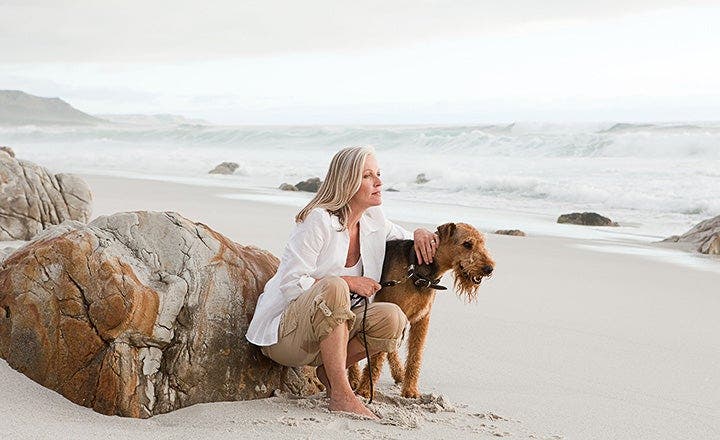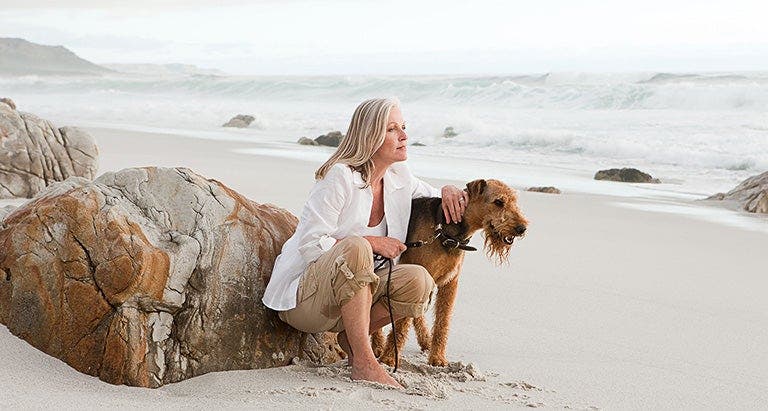5 Ways to Flip a Bad Day Into a Good One


Breast cancer survivor Cathy Leman has a unique name for life after breast cancer: “surthrivorship.” The goal is to do whatever you can to stay healthy and thrive in the days, weeks, and months following treatment. But Leman, a registered dietitian and personal trainer in Chicago, knows that it isn’t always easy to “surthrive.”
“There are many days when self-care might feel like the biggest challenge,” she says. “But no matter where you are on the breast cancer spectrum, doing what you can to improve your food choices and increase your fitness may help provide a sense of being in control, since we often feel like everything else is out of our control.”
The American Cancer Society (ACS) guidelines for breast cancer survivors include maintaining a healthy weight, staying active, and eating nutritious foods—all of which may become casualties of a bad day (which can snowball into a bunch of bad days). Here are some strategies to help keep you focused on what matters, even when your body and mind have other ideas…
1. Go slow, go short—but go.
Despite the recommendations from ACS and others to stay physically active post–breast cancer, motivation for a survivor may be as big a challenge as it is for someone who has never been sick—or bigger, explains Cheryl Rock, PhD, a professor of family medicine and public health at the University of California, San Diego, who has led research on breast cancer patients and lifestyle. “Survivors have gone through so many physical and psychological changes,” she says. “Some drugs cause muscle and joint pain and can make it hard to start a fitness program. If someone is feeling depressed or fatigued, they might say, ‘I’m too tired to exercise.’”
James Hamrick, MD, chief of medical oncology and hematology at Kaiser Permanente of Georgia in Atlanta, says that even if you’re feeling wiped out, “a day on the couch is the last thing you need.” Tie your shoes and walk out the door for some movement, even if it’s slow and you don’t keep it up for long. Both Dr. Hamrick and Rock suggest just 5 to 10 minutes of walking to help you get started.
If you need encouragement, ask friends or family members for support. A standing walking date with a loved one is a simple way to keep an active mentality front and center.
Meanwhile, that 10 minutes of movement might surprise you. “By the time you’ve done 10 minutes, you may feel better and want to keep going,” says Rock. She also suggests that this is a great time to re-engage with whatever physical activities you enjoyed before you got sick. “In my experience, people who figure out what works best for them do better in the long run,” she says. Read how activity can make you feel better, here.
2. Get your satsang on.
If you’re feeling lousy, or down, or just plain meh, consider trying some basic yoga moves—or make an appointment to try a class at a local studio. You may find the practice helps you feel less fatigued and more relaxed in general. One recent Mayo Clinic study of 34 early-stage breast cancer survivors who were suffering from cancer-related fatigue during the first year following diagnosis found that they experienced less tiredness and a better quality of life after participating in a 12-week, 3-times per week DVD yoga program at home. (At-home DVD strength- training also yielded the same benefits.)
And a recent Ohio State University clinical trial of 200 women found that 12 weeks of twice weekly, 90-minute yoga sessions helped lower breast cancer survivors’ intense fatigue and sleeping difficulties, which often follow chemo and radiation.
“I’ve seen yoga work wonders for survivors in terms of helping them find a sense of strength they never knew they had,” Dr. Hamrick says. “Hopefully it becomes something you look forward to doing. If you like it, you’ll keep doing it.”
3. Find your go-tos.
A little planning ahead for the bad days may help you deal with them better when they arrive. Think of it as preemptive self-care, says Melanie Young, author of Getting Things Off My Chest: A Survivor’s Guide to Staying Fearless & Fabulous in the Face of Breast Cancer, who was diagnosed with stage 2A breast cancer in 2009.
For every desire you may have to engage in a less healthy behavior—a day lying around, a “meal” of frosted doughnuts—have a go-to remedy in place to make it as easy as possible to choose the healthier option. What’s your go-to smoothie recipe? What’s your go-to inspirational playlist? Who’s your go-to instant support system? What’s your go-to it’s-exercise-but-makes-me-smile activity? “Having these things at the ready makes your decision-making process that much simpler,” Young says.
4. Hit pause and take a moment.
The urge to backslide into less healthy habits could hit pretty fast, and the impulse may seem like a good idea at the time (“I just need a break”). However, giving in to those urges may become a regular thing, says Young, who became a certified health coach in 2015. She suggests that the low times are the best ones to consciously hit a pause button in your day and take some time to review your wellness plan, either in your head or on paper. It can require just a few minutes but could remind you why it’s so important. “It’s smart to take the time to make sure an eating or workout plan works well for you,” she says. “Believe me, doing this can help get you through the dark days.”
5. Seize the next day.
Everyone has a bad day. It’s OK. The question is how much you allowed the bad day to derail all your good intentions for healthy eating, staying active, and living a healthier life. “If it’s one day, then forgive yourself and start strong tomorrow,” says Young. But if the urge seems to have creeped into a series of days, or if it’s how you’ve been feeling for a while, Young suggests tapping into your support system, including medical professionals who might be able to help.
“You want to feel engaged, interested in trying new things, cooking new dishes, discovering new ways to stay active, and enjoying your loved ones,” says Young. “That’s just the fun you need to be positive and keep moving forward.” If you’re not feeling it—really not—then that’s more than just one bad day. Ask for help.
Learn more about how to live a healthy post-cancer life, here.
This article was reviewed for accuracy in September 2021 by Christi Smith, MS, CSCS, associate manager of science translation at WW. The WW Science Team is a dedicated group of experts who ensure all our solutions are rooted in the best possible research.
